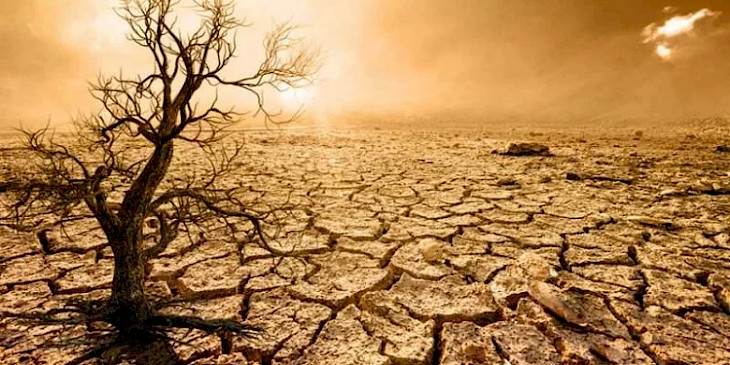In recent years, the impact of global climate change has been especially felt in Tajikistan, manifesting in the reduction of the existing glaciers in the mountains and the intensification of dust storms that cover an increasing area of the country. The nation has long raised the issue of preserving sources of clean drinking water and reducing the melting of glaciers. Tajikistan's appeals to international organizations have not gone unnoticed.
Tajikistan will need $96 billion for measures to adapt the country to climate change and transition to a "green" economy. This verdict is presented in the country report on climate and development prepared by the World Bank and the Committee for Environmental Protection of Tajikistan, reports Avesta.
The report states that Tajikistan will require about $17 billion for climate adaptation measures and $79 billion for reforms by 2050. These funds are necessary to implement the strategy for enhancing the country’s climate resilience and protecting the population from the negative impacts of climate change.
Tajikistan is already facing serious consequences of climate change, necessitating urgent measures to protect its population and economy. According to the report, inaction could lead to significant negative consequences:
- Economic losses: By 2050, the country's real GDP could decrease by 5-6% due to the negative impacts of climate changes on infrastructure, livestock, and agriculture.
- Land degradation: The annual costs associated with this are estimated at around $325 million. By 2050, this figure is expected to double, indicating a growing problem of soil quality deterioration.
- Air pollution: Tajikistan ranks second in Central Asia in terms of mortality related to air pollution, with 84 cases per 100,000 inhabitants. Without strategic investments and reforms, this situation could worsen.
- Social impacts: Climate change could push an additional 100,000 people below the poverty line. The most vulnerable groups include women, children, and people with disabilities.
These data underscore the need for urgent measures to adapt to climate change and mitigate its consequences in Tajikistan.
The report identifies five key areas for ensuring a sustainable transition to a low-carbon economy:
- Improving institutions and the regulatory framework;
- Implementing inclusive climate strategies;
- Mobilizing climate financing;
- Adaptation in the “water-energy-food” nexus;
- Accelerating low-carbon development.
Implementing these measures will improve the state of the environment, reduce carbon emissions, and restore degraded lands. It is expected that by 2050, there will be nearly zero emissions in the transport and waste sectors.
The success of Tajikistan's climate adaptation strategy will depend on the support of international partners, active participation of the private sector, and society’s readiness for change, the report states.
In the "Ecological Threat Report" published by the Institute for Economics and Peace in 2022, Tajikistan was named one of the world's ecological "hot spots." The country is listed among 27 states lacking resources to combat extreme environmental shocks.
Experts note that Tajikistan is already suffering from the effects of climate change, as evidenced by:
- Accelerated glacier melting. Over the past 40 years, global warming has led to the disappearance of more than 1,000 out of 13,000 glaciers located in Tajikistan’s mountains;
- Changes in seasonal water availability;
- Intensified droughts and rising temperatures.
These factors create serious problems for Tajikistan’s agriculture and energy sector, which heavily relies on hydropower: 98% of the country's electricity is generated by hydropower plants. President Emomali Rahmon has announced plans to double "green" energy production by 2050, thereby reducing greenhouse gas emissions to zero.
CentralasianLIGHT.org
November 13, 2024

